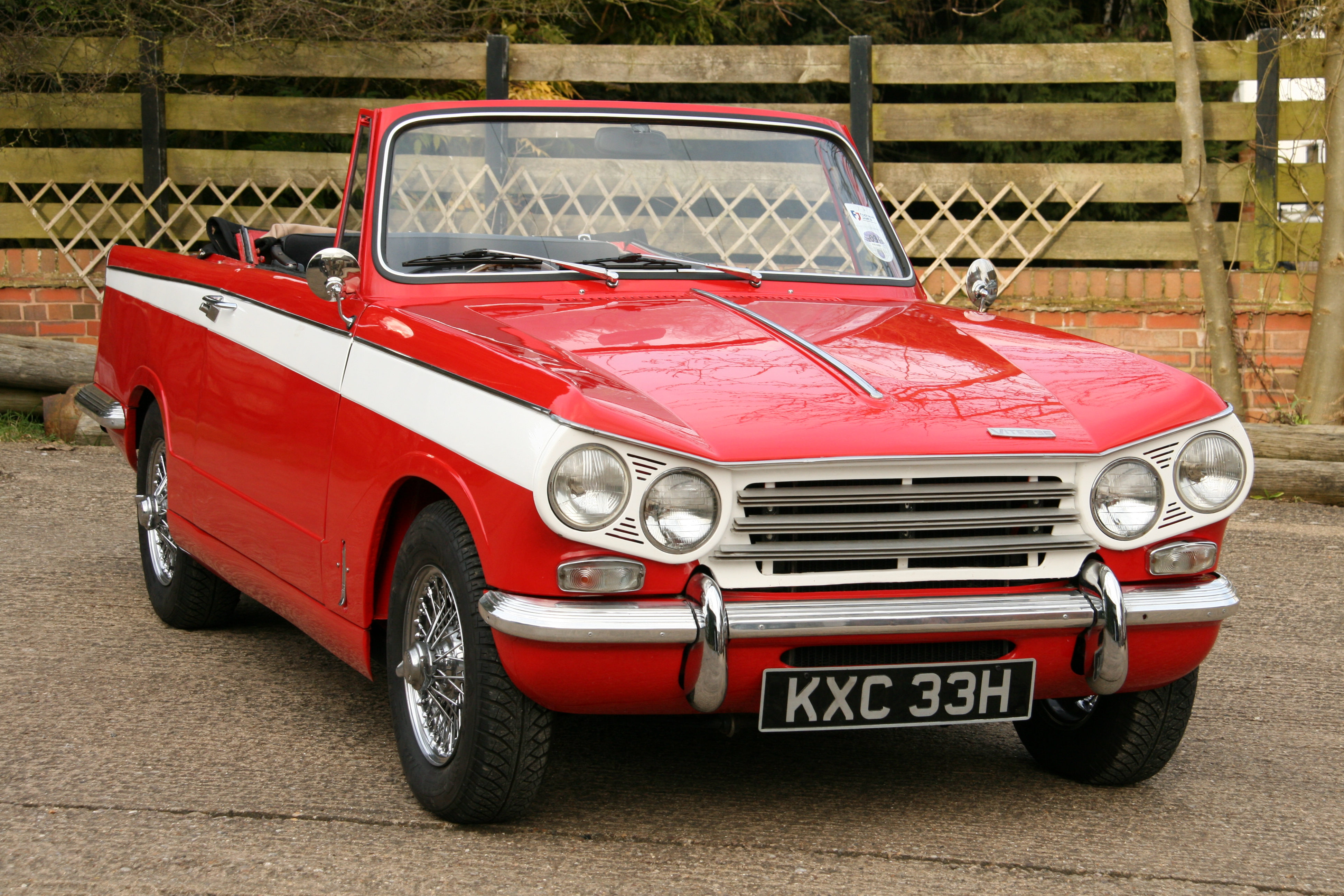-
Insurance
InsuranceAbout our productsLearn about insuringGet a quote Get current values, historical values, model history and more.
-
Valuation
ValuationHagerty valuation toolLook up a vehicle value Get current values, historical values, model history and more.
-
Events
EventsHagerty official eventsHagerty ClubhouseEvent calendar
-
Entertainment
EntertainmentMore to explore
- Portal login
1968 Triumph Vitesse
2-Litre Mk 2 Convertible 2 L
Vehicle values by condition
Fair
Condition 4
£5,500
#4 cars are daily drivers, with flaws visible to the naked eye. The chrome might have pitting or scratches, the windshield might be chipped.
Good
Condition 3
£7,000
#3 cars could possess some, but not all of the issues of a #4 car, but they will be balanced by other factors such as a fresh paint job or a new, correct interior.
Excellent
Condition 2
£8,800
#2 cars could win a local or regional show. They can be former #1 cars that have been driven or have aged. Seasoned observers will have to look closely for flaws.
Concours
Condition 1
£17,400
#1 vehicles are the best in the world. The visual image is of the best car, unmodified, in the right colours, driving onto the lawn at the finest concours.
Insurance premium for a
1968 Triumph Vitesse 2-Litre Mk 2 Convertible 1998
valued at £7,000
£114.27
/ year*
History of the 1968 - 1971 Triumph Vitesse

1968 - 1971 Triumph Vitesse
For Triumph fans, the Vitesse is certainly a car that's greater than the sum of its parts. It's fun to drive, sounds great, is easy to work on, and parts are a doddle to find – and yet, looked at in cold, hard clinical terms, what it really amounts to is a Herald with the six-cylinder engine from the 2000 saloon (initially in 1.6-litre form) shoehorned under the bonnet. Car spotters in the 1960s could tell them a mile off. Thanks to the new twin-headlamp arrangement, while drivers just loved the performance and refinement from the ex-Standard engine and improved handling from the uprated chassis.
The Vitesse was launched in 1962, and in 1600cc form it proved extremely popular, with more than 22,000 built. The small-bore engine was utterly sweet-revving, if lacking in ultimate power, and it was never used in any other Triumph – consequently, many have been uprated to 2-litres. Overdrive is worth seeking out if you're looking at buying one, although it wasn't that common an optional extra when new. Four years later, the 2-litre Vitesse was launched – and as well as the 2000 saloon's engine, the new upgunned car also received taller gearing, wider wheels, and larger front brake discs. The suspension was left unchanged, though, which made this fun car sometimes a little too fun in the wrong conditions.
When the Vitesse Mk2 was launched in 1968, revised rear suspension with lower wishbones, instantly made the handling safer near the limit, righting the wrongs of the old car. Car spotters might struggle with this one, with the three-bar grille being the main visual difference between the Mk1 and Mk2.
Like all separate chassis Triumphs of this era, you need to go into buying one with your eyes open. Make sure the front suspension trunnions are well greased, and the rack-and-pinion steering is tight and free of play, with no bush wear in the steering column. Always look out for driveshaft noise, too, as well as searching for signs that the propshaft might be out of balance. Of course, rust is an ever-present threat with these cars, so check everywhere. And remember, get the right car – which shouldn't cost an arm and a leg – and you can enjoy classic motoring with very few downsides.
All 1968 Triumph Vitesse body types
| Year | Make | Model | Submodel | Body Type | Engine size | Average value |
|---|---|---|---|---|---|---|
| 1966 | Triumph | Vitesse | 2-Litre Mk I | Convertible | 2 L | £ 5,100 6,800 9,000 17,400 |
| 1966 | Triumph | Vitesse | 2-Litre Mk I | Saloon | 2 L | £ 3,500 5,200 7,600 11,800 |
| 1968 | Triumph | Vitesse | 2-Litre Mk 2 | Convertible | 2 L | £ 5,500 7,000 8,800 17,400 |
| 1968 | Triumph | Vitesse | 2-Litre Mk 2 | Saloon | 2 L | £ 3,900 5,500 7,800 12,500 |
Hagerty Newsletter
Get your weekly dose of car news from Hagerty UK in your inbox

ADVERTISEMENT